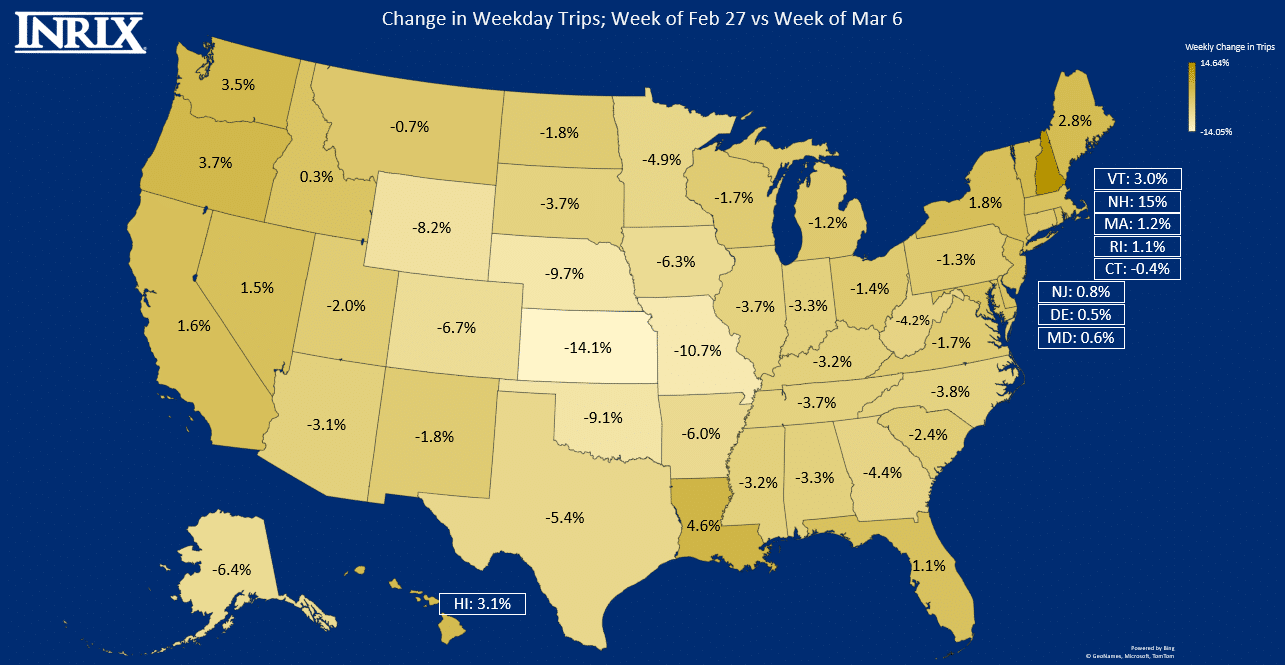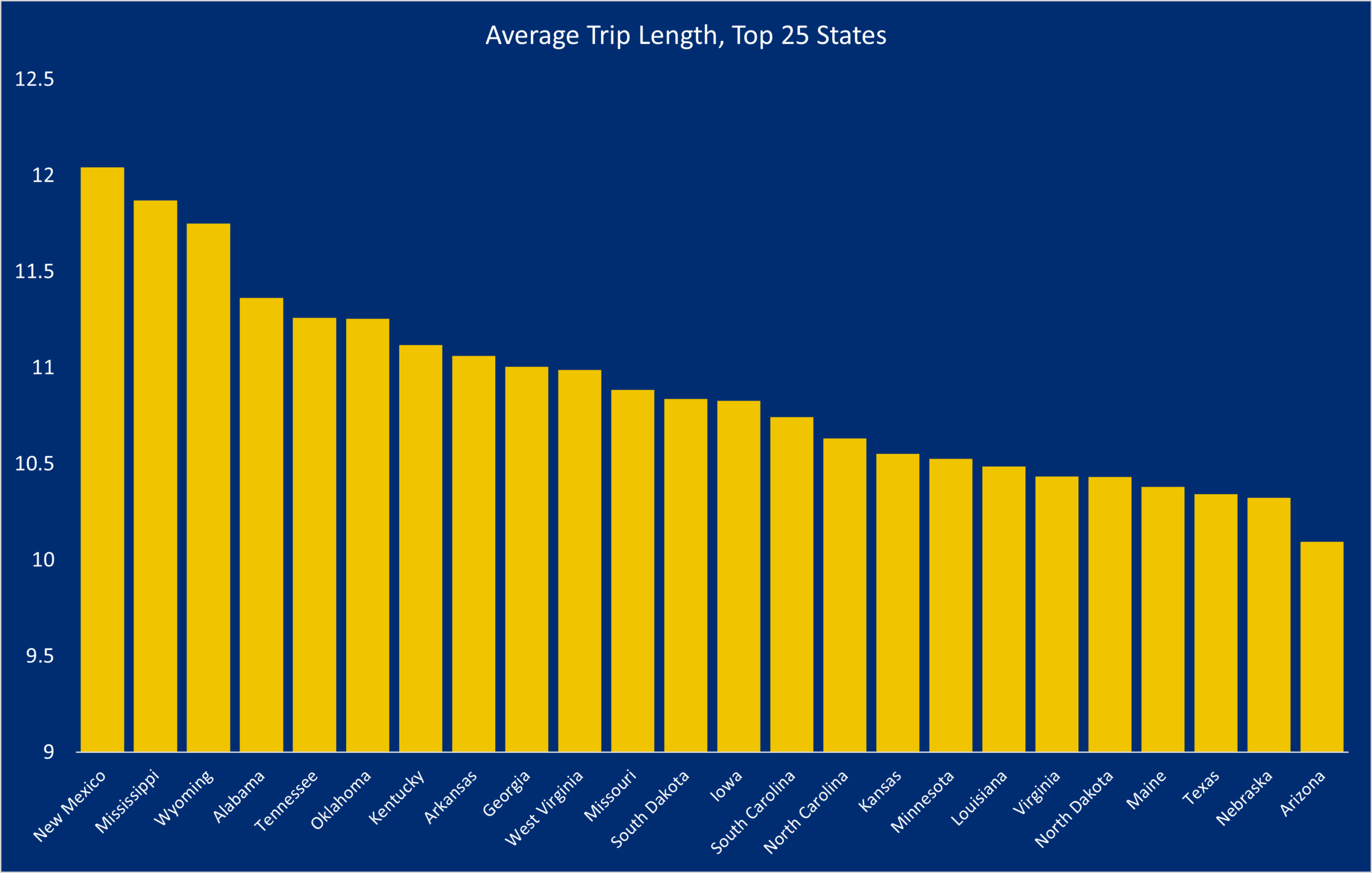
Average unleaded fuel prices have increased nearly 50% over the last year, with half of that increase in just the last month, according to AAA. So far, the price increases have had a negligible effect on driving, as employees return to offices and COVID-19 restrictions eased across the country. Despite the increase in trip demand over the last two months as the country re-emerged from Omicron, nationwide weekday vehicle trips fell -2% last week from the week prior. Yet travel habits varied considerably by state.
Generally, Midwestern and Southern states saw decreases in trip demand while Western and Northeastern states saw increases. Vehicular trip decreases verse the prior week were most noticeable in Kansas and Missouri, which saw a decrease of -14% and -11%, respectfully.
Decreases in trips also occurred among states that have the longest average trips.

Of the 25 states with the longest average trip length last week, every single state saw a decrease in vehicular trips last week vs the week prior.
The increase in fuel costs may also hit the Midwest relatively hard, where agriculture is prominent. Farming communities may be especially affected by fuel prices, especially diesel, as it powers farm equipment and modes of transport. Some estimates put fuel prices as 5% of a farm’s overall cost – and a large increase in fuel prices may affect travel habits significantly.
Higher fuel costs continue to exert downward pressure on travel, though gasoline prices are generally thought of as relatively inelastic, meaning a change in price only equates to small changes in demand. However, fuel prices may hit a tipping point – in which driving behavior significantly shifts. –
The good news, for now, is the price of oil appears to be easing.




